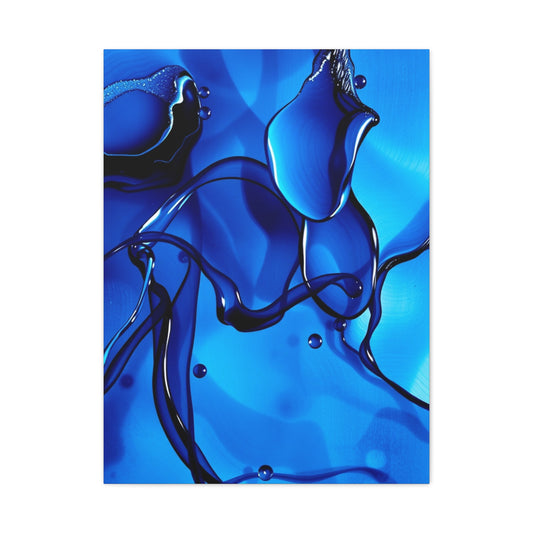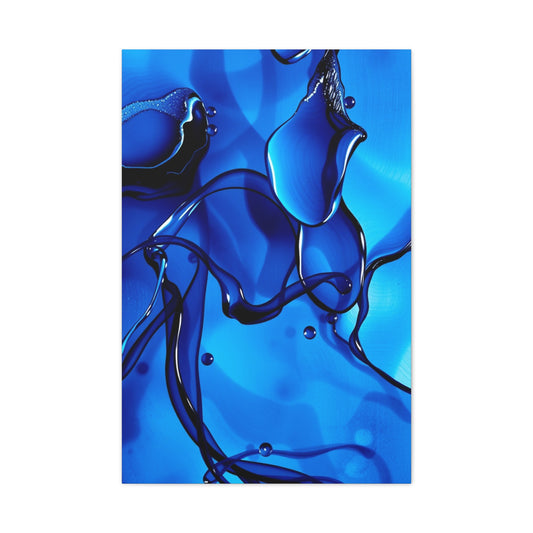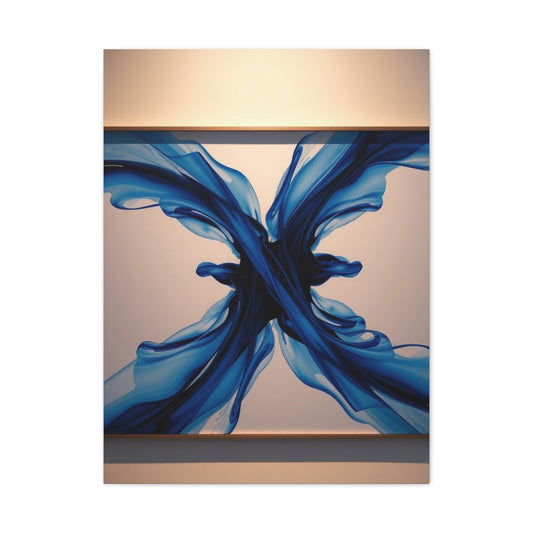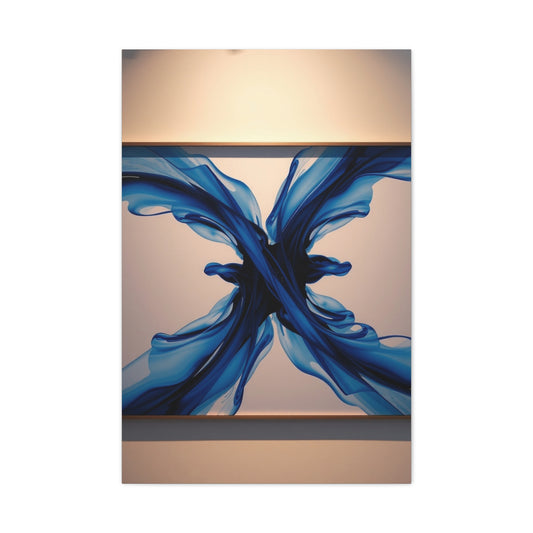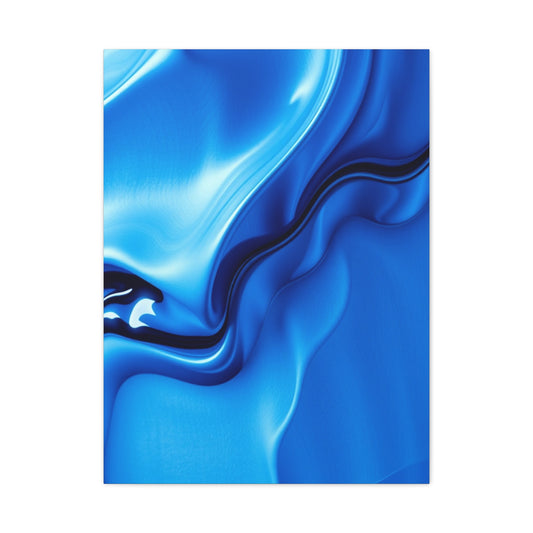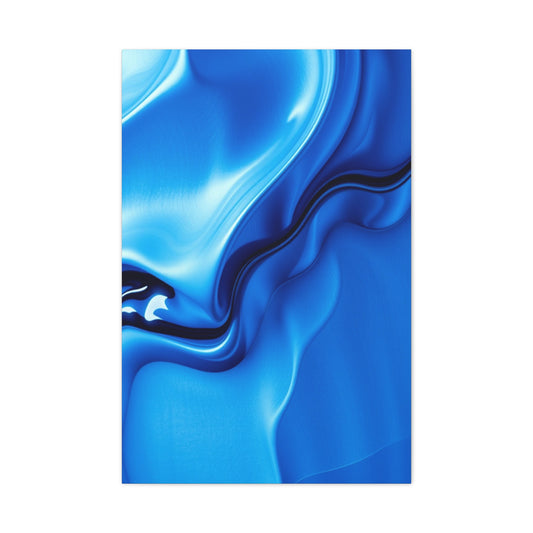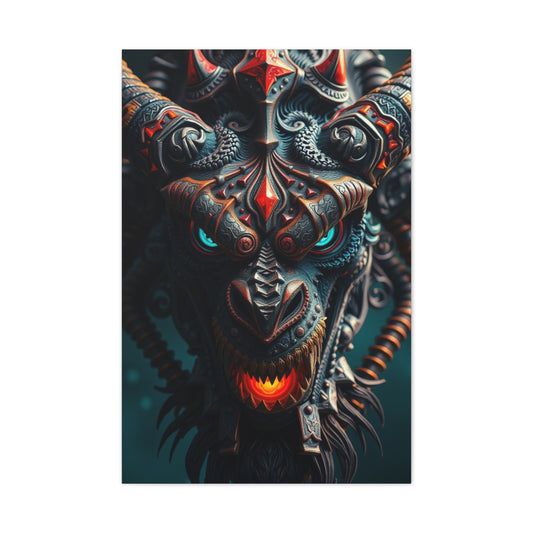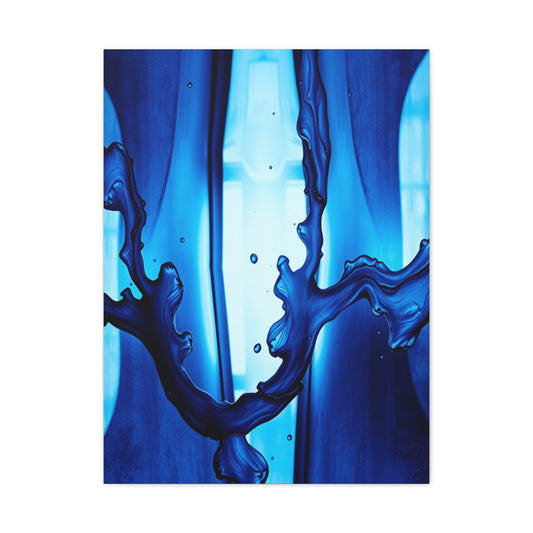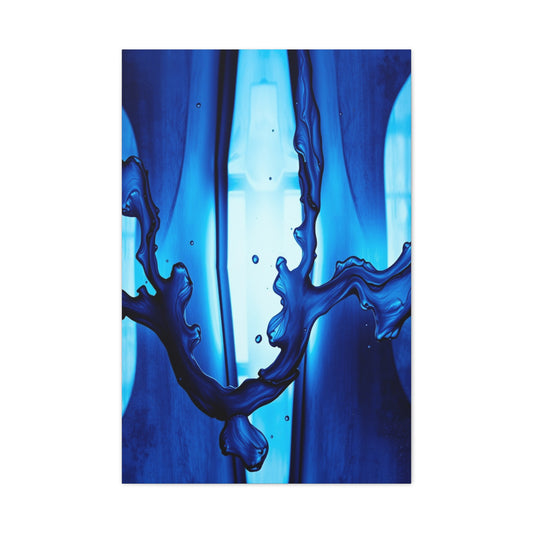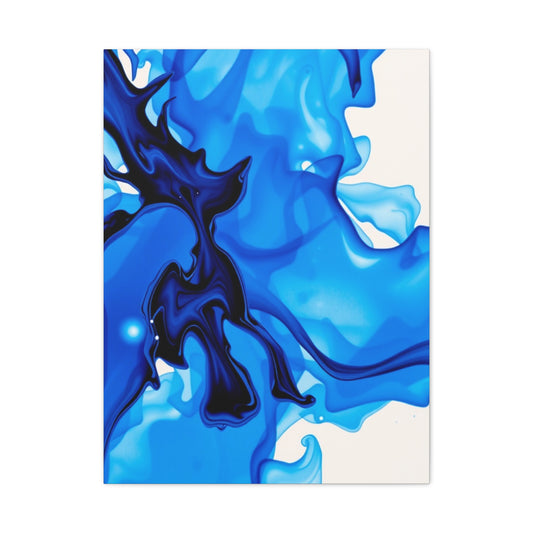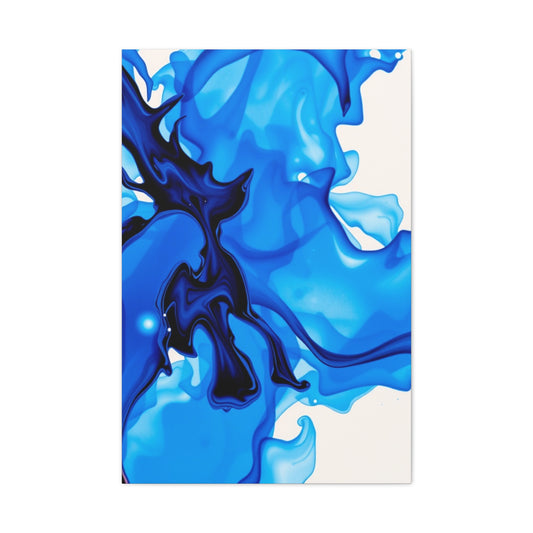Conceptual portrait photography stands as one of the most inventive and creative niches within the photography world. This genre, known for its power to communicate complex ideas and emotions through visual means, offers photographers the opportunity to tell stories that transcend reality. With conceptual portraits, photographers explore human expression in ways that reflect deep philosophical thoughts, inner struggles, and imaginative creativity. By using abstract representations, surreal elements, vivid colors, and digital manipulation, these artists push the boundaries of portraiture and connect viewers with their unique visions of the world.
In this article, we explore 34 remarkable conceptual portrait photographers whose work will inspire you in 2025. These artists showcase an endless range of perspectives and techniques that highlight the vast creativity within the world of conceptual portraiture. Whether you’re an avid photography enthusiast, a student of art, or someone simply interested in how creativity can transform the human form into powerful visual statements, these photographers are sure to leave you awe-inspired.
What is Conceptual Photography?
At its heart, conceptual photography is not about capturing a moment as it is seen by the naked eye but instead about portraying an idea, concept, or narrative. This photography style invites viewers into a world of symbolism and creative storytelling, offering more than just a reflection of reality. The concept behind a conceptual portrait often carries a deep meaning, from reflecting the photographer’s own inner emotions to offering social commentary or philosophical insights.
|
Related Catagories: |
Photographers involved in conceptual portraiture decide on the narrative or message before they even begin shooting. This preparation leads to a careful consideration of the composition, elements in the frame, and visual cues that enhance the meaning they wish to communicate. This process often involves the blending of photography with other art forms, such as painting, drawing, and digital manipulation, to create an image that is rich in storytelling.
Conceptual portraits are deeply personal for many photographers. These images allow the artist to explore their own struggles, desires, or personal journeys. In many cases, these portraits are visual representations of abstract thoughts and emotions, turning them into tangible art. The beauty of conceptual portraiture is that it invites viewers to interpret and experience the artwork on their own terms, discovering new meanings or connections each time they view the image.
34 Fascinating Conceptual Portrait Photographers to Watch in 2025
Here’s a look at some of the most captivating conceptual portrait photographers to follow in 2025. These artists each have a unique style that demonstrates the vast creativity within the world of conceptual portraiture.
Anya Anti
Anya Anti is a remarkable fine-art conceptual photographer who specializes in self-portraits that blend her figure seamlessly with the natural environment. Her work explores themes of connection to the Earth, reflecting an ethereal union between humanity and nature. Anti’s artistic approach revolves around blending the human form with landscapes, often portraying her subjects as one with the environment. This integration allows her to express a profound sense of belonging while evoking a hauntingly melancholic atmosphere. The cold, moody aesthetic she creates through her use of lighting and color is a signature element of her work. It creates a palpable emotional connection with the viewer, drawing them into a shared experience of introspection and reflection. This universal sense of melancholy has garnered Anti a strong following, as it speaks to the emotions that resonate with many—feelings of solitude, vulnerability, and the complexity of human existence.
In addition to her self-portraits, Anti’s conceptual style frequently includes surreal elements that alter the perception of reality. Her work invites audiences to reconsider their relationship with the natural world, contemplating the fragility of the environment and the human impact on it. By using nature as both a canvas and a subject, Anti's conceptual portraits remain deeply connected to themes of environmentalism, personal identity, and introspection, making her work both visually striking and intellectually engaging.
Brooke Shaden
Brooke Shaden is a renowned artist who specializes in conceptual portrait photography that explores deeply emotional and dark narratives. Known for her radical approach to self-reflection, Shaden’s work often features women in various states of emotional distress, capturing raw, painful experiences in a beautifully haunting way. Her portraits convey vulnerability, trauma, and resilience, often evoking a deep sense of empathy in her viewers. The intensity of her emotional themes is counterbalanced by the dreamy and surreal quality of her images. Shaden has an exceptional ability to craft scenes that speak to the human condition, addressing everything from grief to self-discovery.
Shaden’s distinct style revolves around creating cinematic scenes that reflect personal struggles, mental health, and existential themes. Her use of color, lighting, and composition heightens the emotional impact of her work. The contrast between the fantastical elements and the grounded emotional depth in her portraits is one of Shaden’s trademarks. Each piece feels like a window into a world filled with poignant emotions, yet still beautifully composed and crafted. Her portraits tell stories that are deeply relatable yet shrouded in mystery, creating space for individual interpretation.
Jovana Rikalo
Jovana Rikalo, a Serbian conceptual photographer, is known for her captivating ability to create miniature worlds within her portraits. Her work takes viewers into dream-like, surreal realms, where every detail is meticulously planned and executed. Rikalo’s conceptual portraits are a fusion of fine art and surrealism, capturing both the softness of the human experience and the complexity of the subconscious. By using digital manipulation and traditional photographic techniques, she constructs scenes that feel otherworldly, often showcasing her subjects in whimsical yet emotional settings.
What sets Rikalo’s work apart is her dedication to storytelling through carefully crafted scenarios. Each portrait is a narrative in itself, inviting viewers to imagine the story behind the image. Her work reflects themes of escapism, fantasy, and the blurred boundaries between reality and imagination. By creating these intricate, dream-inspired portraits, Rikalo allows her subjects to become symbols of both universal emotions and personal experiences, making each photograph resonate on a deep, personal level.
Dasha Pears
Dasha Pears is a conceptual portrait photographer who is celebrated for her minimalist approach to photography. Known for her use of geometric shapes and subtle Photoshop overlays, Pears’ work is a striking example of how simplicity can convey powerful messages. Her conceptual portraits often explore themes of inner turmoil, growth, and self-discovery, using minimalistic settings to reflect the complexity of human emotion. Through the careful placement of shapes, light, and composition, Pears creates portraits that feel both contemporary and timeless.
Her use of geometric elements is not merely decorative but serves as a visual metaphor for the abstract concepts she seeks to express. The balance between the human form and these geometric elements evokes feelings of tension, harmony, and the constant process of self-exploration. Pears’ portraits don’t just capture a moment—they encapsulate an emotional journey. Each photograph is an invitation to engage with the layers of meaning that lie beneath the surface, making her work both thought-provoking and visually compelling.
Adam Martinakis
Adam Martinakis is an artist whose conceptual portraits challenge traditional representations of the human form. His surreal, abstract sculptures of the human body are rich with geometric shapes and vivid colors, blending photography with digital artistry to create thought-provoking imagery. Martinakis’ portraits explore philosophical ideas about humanity, existence, and identity, pushing the boundaries of what can be considered a portrait. His work delves into the abstract, where the human figure becomes fragmented or redefined through the use of shapes, textures, and colors.
Martinakis’ work often reflects themes of transformation, the complexity of human identity, and the interplay between physical form and internal essence. The abstraction of the human body in his conceptual portraits speaks to the fluidity of identity, offering a visual metaphor for the constant state of change that is part of the human experience. His work invites viewers to challenge their perceptions of the body, while simultaneously exploring deeper existential questions. Martinakis’ ability to combine sculpture, photography, and digital manipulation makes him a standout in the realm of conceptual portraiture.
Pol Kurucz
Pol Kurucz is a conceptual portrait photographer who challenges the traditional ideals of beauty in his work. His portraits embrace human imperfections, showcasing the rawness and authenticity of his subjects. Kurucz’s work often highlights the contradictions within human expression, capturing moments of both joy and sadness, strength and vulnerability. His photo series, including "Angry Dolls" and "Bored in NYC," feature models in colorful, playful settings, yet there’s an underlying tension in the way the subjects are portrayed. Kurucz’s conceptual portraits are visually vibrant but emotionally complex.
What makes Kurucz’s work particularly engaging is the way he uses portraiture to question societal standards of beauty and human expression. He embraces flaws and imperfections, inviting viewers to reflect on their own perceptions of self-worth and identity. The whimsical nature of his work juxtaposed with its deeper, more contemplative themes creates a compelling narrative that resonates on both an emotional and intellectual level. Kurucz’s portraits are as much about the human experience as they are about challenging societal norms.
Claire Luxton
Claire Luxton is a self-portrait artist whose work explores the emotional and psychological depth of the human experience. Drawing inspiration from nature and personal experiences, Luxton’s conceptual portraits evoke themes of inner conflict, hope, and self-discovery. Her self-portraits are not just images of herself but representations of her emotional landscape. She often incorporates elements of nature, such as flowers, birds, and other organic motifs, to symbolize growth, healing, and the complexity of the human condition.
Luxton’s use of vibrant colors and symbolic imagery adds emotional depth to her portraits, creating a visual language that speaks to the viewer on a deeply personal level. Each piece invites reflection and introspection, encouraging the viewer to examine their own emotional journeys. Luxton’s conceptual portraits are not only visually stunning but also offer profound insights into the human experience, making her work both beautiful and intellectually stimulating.
Gemmy Woud-Binnendijk
Gemmy Woud-Binnendijk’s fine-art portraits channel the past, drawing on the aesthetic of historical portraiture while integrating modern conceptual elements. Her work evokes the grandeur of Renaissance, Baroque, and Victorian-era paintings, using costumes, settings, and poses that reflect these periods. However, Woud-Binnendijk’s portraits are not simply reproductions of historical art; they blend the past with contemporary conceptual storytelling, creating a bridge between classical beauty and modern artistic expression.
Woud-Binnendijk’s work is imbued with a sense of nostalgia, yet it also pushes the boundaries of portraiture by incorporating symbolic elements that reflect contemporary themes. Her ability to merge the old with the new creates a unique visual experience, making her portraits timeless while still resonating with modern viewers. The detailed costumes, dramatic lighting, and emotive posing in her work all contribute to the emotional depth and narrative complexity of her conceptual portraits.
David LaChapelle
David LaChapelle is one of the most iconic names in the world of conceptual portrait photography. His work is often described as bold, vibrant, and filled with humor. LaChapelle’s conceptual portraits span a wide range of themes, from the biblical and historical to the modern, often combining surreal, dream-like elements with sharp, high-concept social commentary. He uses his technical skill to create eye-catching images that are as much about spectacle as they are about meaning. His compositions are filled with meticulously designed color palettes, lighting, and staging that add a surreal, almost otherworldly quality to his portraits.
LaChapelle's conceptual portraits don’t just capture human figures; they capture the essence of entire stories, pushing the boundaries of what portraiture can represent. Whether he’s working with pop culture icons or creating entirely new characters, LaChapelle is known for his ability to create narratives within a single frame, often exploring ideas of fame, consumerism, spirituality, and the human condition. His work is immediately recognizable, often eliciting strong reactions from the viewer. The humor and absurdity found in many of his portraits highlight his unique approach to conceptual photography, where social issues and personal identity are examined with a touch of satire. LaChapelle’s conceptual portraits don’t just showcase beautiful people; they invite the viewer to reflect on deeper societal and personal themes, making his work both visually stunning and thought-provoking.
Johannes J. Jaruraak (Hungry)
Known for his dark and surreal conceptual portraits, Johannes J. Jaruraak, also known as Hungry, uses elaborate makeup and costumes to transform his models into haunting, almost grotesque versions of humanity. His work is unsettling and thought-provoking, often pushing the boundaries of beauty and human distortion. Hungry’s conceptual portraits explore themes of alienation, identity, and societal expectations, creating images that challenge the viewer's perceptions of beauty, normalcy, and the human form. The use of bold makeup, masks, and costumes serves as both a creative tool and a social commentary on the artificiality of identity, especially in an age of social media and curated personas.
In Hungry’s conceptual work, the transformation of his subjects into otherworldly figures creates a sense of both horror and fascination. His images often evoke a feeling of discomfort, as they invite the viewer to confront the darker side of human nature and the way we perceive ourselves and others. There is a deep emotional resonance in Hungry’s work, as it speaks to the alienation many feel in a world that constantly demands perfection and conformity. His portraits are filled with dramatic contrasts and surreal details, making them visually striking and emotionally powerful. By distorting his subjects into fantastical and terrifying forms, Hungry opens up a conversation about the constructed nature of beauty and identity in contemporary society.
Damian Drewniak
Damian Drewniak’s fine-art conceptual portraits capture universal themes through a sophisticated and highly aesthetic lens. His work delves deep into human emotion, exploring concepts like love, loss, vulnerability, and identity. Drewniak’s portraits often involve carefully composed settings, with a focus on lighting, mood, and texture. His ability to create emotional depth through these elements results in portraits that speak to shared human experiences, engaging viewers on both a personal and artistic level.
Drewniak’s conceptual portraits are defined by their clean lines, dramatic contrast, and surreal details. He often creates scenes that feel both ethereal and grounded, mixing elements of fantasy with realistic representations of emotion. The use of vivid colors and delicate compositions adds a layer of intimacy to his portraits, allowing viewers to connect with the subject in a meaningful way. Drewniak's approach to conceptual portraiture goes beyond surface-level beauty, instead focusing on the complex emotions that define us as individuals. Through his work, he invites viewers to explore the depths of their own emotional landscapes, making his conceptual portraits both powerful and introspective.
Patty Maher
Patty Maher is a Canadian photographer known for her distinctive approach to conceptual portraiture. Her work predominantly focuses on female figures, but what sets her apart is her willingness to obscure or abstract the faces of her subjects. Rather than presenting a literal representation of the subject, Maher uses symbolic postures, colors, and imagery to convey deep emotional undercurrents. Her conceptual portraits often blur the line between realism and surrealism, creating a space where the viewer is invited to interpret the emotions and narratives behind the images.
Maher’s use of the female form is not just about portraying beauty; it is about exploring the complexities of femininity, identity, and emotion. By focusing on the body rather than the face, Maher challenges the viewer to look beyond the superficial and engage with the deeper emotional currents at play. Her portraits explore themes of vulnerability, strength, and transformation, inviting the viewer to explore the emotional landscape of the subject. Maher’s conceptual approach to portraiture is introspective and contemplative, making each image feel like a moment frozen in time, full of unspoken stories and emotions.
Saga Wendotte
Saga Wendotte, a Swedish conceptual photographer, is renowned for her ability to capture children in surreal, often controversial settings. Her portraits juxtapose innocence with societal cruelty, creating a striking contrast that speaks to the complexities of childhood and the harsh realities of the world. Wendotte’s conceptual portraits are not simply about depicting children; they are about exploring themes of innocence, vulnerability, and the loss of childhood in a world that can be both beautiful and brutal.
Through her surreal and haunting imagery, Wendotte addresses uncomfortable truths about society, using children as a metaphor for purity and untainted potential. Her work often portrays young subjects in unsettling or exaggerated scenarios, challenging the viewer to confront uncomfortable aspects of the human experience. The tension between innocence and cruelty in her portraits creates a powerful emotional impact, prompting the viewer to reflect on the fragility of childhood and the world in which it exists. Wendotte’s conceptual portraits are both visually striking and intellectually engaging, exploring profound themes through a lens of emotional sensitivity and artistic creativity.
Karen Katar (Cantuq)
Karen Katar, also known as Cantuq, is a conceptual artist whose surreal composites transport viewers into dreamlike worlds. Katar’s work is deeply influenced by childhood imagination, creating fantastical realms where animals, humans, and surreal landscapes coexist. Her use of Photoshop allows her to craft these dream-inspired scenes, blending vibrant colors and intricate details to create emotionally rich landscapes that feel both otherworldly and grounded in reality.
Katar’s conceptual portraits invite the viewer to step into a world of fantasy and wonder, where the boundaries between reality and imagination blur. Her work is visually captivating, with each portrait serving as a window into a deeper emotional or philosophical journey. By combining human and animal forms, Katar’s work explores themes of connection, identity, and the power of the imagination. Her use of surreal imagery not only adds a layer of intrigue but also allows for a more profound exploration of human nature and the subconscious.
Flóra Borsi
Flóra Borsi’s self-portraits are a masterful blend of reality and fantasy, where she transforms herself into otherworldly creatures through the use of digital manipulation. Borsi’s work often incorporates natural elements, such as butterflies, flowers, and birds, adding layers of symbolism to her conceptual portraits. These elements serve to deepen the emotional impact of her work, inviting the viewer to interpret each image as a visual representation of the artist’s inner world.
|
Related Catagories: |
Borsi’s conceptual portraits go beyond traditional self-portraiture, using her own image as a medium to explore themes of transformation, identity, and the human connection to nature. Her work blurs the lines between the real and the imagined, creating a dreamlike atmosphere that draws the viewer into her world. The fantastical creatures she becomes in her portraits are not just visual representations; they are symbolic of the emotional and psychological landscapes she wishes to express. Through her conceptual work, Borsi offers a glimpse into her own creative and emotional journey, making her self-portraits both personal and universal.
Ziqian Liu
Ziqian Liu’s minimalist conceptual portraits are characterized by their ethereal and abstract quality. Rather than focusing on the full human figure, Liu often fragments the body, using reflections and body parts to create an otherworldly aesthetic. Her work focuses on abstract forms that convey a sense of mystery and femininity, with an emphasis on creating a visual language that speaks to the viewer on a deep emotional level.
Liu’s portraits often feel meditative and introspective, inviting the viewer to engage with the concept of identity in a less literal way. The fragmented nature of her work speaks to the complexities of the human experience, where identity is not always cohesive or easily defined. Through her abstract approach, Liu creates conceptual portraits that challenge traditional notions of portraiture and invite the viewer to explore the boundaries between the self and the other, the known and the unknown. Her work offers a unique perspective on identity, beauty, and the complexity of human nature.
PrOject Uno
PrOject Uno is a collective of contemporary portrait artists who delve into the surreal and dark aspects of human existence through their unique conceptual portraiture. This collective brings together a range of artists who explore various artistic styles, yet they all share a common thread of investigating the more unsettling, introspective, and often taboo corners of human life. The collective's work is marked by the exploration of complex emotions and themes that are rarely discussed in traditional art forms, from existential dread to the haunting beauty of the human experience. Each artist in PrOject Uno brings a distinct voice to the collective, creating an eclectic but unified body of work that resonates deeply with viewers.
Many of PrOject Uno's portraits focus on surreal and abstract representations of human beings, often distorting the figures in ways that invite viewers to reflect on their own experiences with identity, reality, and the emotional landscapes that shape us. The portraits are visually striking, combining elements of fantasy and realism to craft an atmosphere that challenges the viewer’s perception. By confronting societal taboos and delving into the darker recesses of human emotion, PrOject Uno's artists create a powerful visual language that speaks to the complexities and contradictions inherent in human nature.
Through the collective’s work, the viewer is taken on a journey into a realm where the fantastical and the real coexist, and where the boundaries between truth and imagination are often blurred. This blending of dark themes with surreal aesthetics allows for a unique reflection on our collective fears, desires, and the human experience in a world that often feels fragmented and uncertain.
Joel Robison
Joel Robison is a conceptual portrait photographer renowned for his whimsical, fairytale-inspired imagery. Often featuring himself as the central character, Robison’s portraits transport the viewer into magical worlds where he assumes the roles of giants, tiny men, or other fantastical figures. His conceptual portraits are a blend of surrealism and playful symbolism, inviting the viewer to engage with the narratives he constructs. The key to Robison's work is the sense of wonder and escapism he creates, with his images often filled with a sense of magic, adventure, and the fantastical.
Robison’s portraits are deeply introspective, yet they retain a sense of lightheartedness that makes his work both approachable and visually captivating. His fairytale-inspired scenes explore universal themes of transformation, identity, and imagination, offering a visual escape from the mundane. Through his creative compositions, Robison invites viewers into a world where the ordinary becomes extraordinary, and where the boundaries between reality and fantasy are seamlessly intertwined.
In his work, Robison uses props, vibrant colors, and imaginative settings to create whimsical worlds where reality is suspended, allowing the viewer to experience life through a lens of playful curiosity. His conceptual portraits explore how we perceive ourselves and others, inviting a dialogue about personal identity, the role of imagination in our lives, and the fantastical possibilities of the world around us. With a strong emphasis on self-expression and creative freedom, Robison’s work showcases the power of conceptual portraiture to reflect the inner workings of the mind and the boundless potential of human imagination.
Bella Kotak
Bella Kotak’s ethereal, fairytale-inspired conceptual portraits transform women into mystical, otherworldly figures that are surrounded by nature. Her portraits blend the natural world with elements of fantasy, creating images that feel like a dreamscape where reality and imagination coexist. Kotak’s work is an exploration of femininity, beauty, and empowerment, as she uses her conceptual portraits to create powerful, mystical figures who embody a sense of grace, strength, and mysticism.
Kotak’s use of nature in her portraits adds another layer of symbolism to her work. By incorporating flowers, forests, and other natural elements, she not only highlights the ethereal beauty of the female form but also creates a connection between the subject and the natural world. The settings of her portraits are often enchanted, with lush forests, ethereal lighting, and soft, flowing fabrics all contributing to the sense of magic that her images convey. Each portrait feels like a scene taken from a forgotten fairytale, where the subject becomes part of the landscape, embodying the deep connection between humanity and the natural world.
Kotak’s conceptual portraits delve into themes of transformation, self-discovery, and the beauty of the feminine spirit. Her work is an invitation for viewers to reflect on their own identities, and the natural, mystical world that surrounds us. With her soft yet powerful imagery, Kotak continues to redefine the boundaries of conceptual portraiture, offering a visual experience that is both enchanting and empowering.
Auguste Lefou
Auguste Lefou’s conceptual portraits focus on the relationship between humans and technology, often portraying figures as emotionless, robotic beings. His work challenges societal norms and explores themes such as digital isolation, consumerism, and the impact of technology on human identity. Lefou’s portraits often depict his subjects in stark, mechanical poses, evoking feelings of detachment and the loss of individuality in a hyperconnected world. Through his work, Lefou invites the viewer to reflect on how technology has shaped our identities, relationships, and experiences.
The subjects in Lefou's conceptual portraits often appear to be disconnected from the world around them, existing in a realm where human emotion and empathy are overshadowed by the coldness of technology. His work challenges the viewer to consider how digital technology, while connecting us in new and innovative ways, may also be driving a wedge between individuals and their authentic selves. Lefou’s use of sleek, futuristic imagery and minimalist compositions underscores the dehumanizing aspects of the digital age, creating portraits that are both thought-provoking and visually striking.
Lefou’s conceptual portraiture explores the intersection of humanity and technology, questioning whether our increasing reliance on digital devices and virtual connections is altering the very nature of human experience. His work asks important questions about the impact of consumer culture, the rise of artificial intelligence, and the consequences of living in a world where human emotions are increasingly mediated by screens and machines.
Kyle Thompson
Kyle Thompson’s introspective conceptual portraits are deeply personal, exploring themes of vulnerability, self-reflection, and the emotional isolation that many people experience. His "Sinking Ship" series, which features haunting images of desolate landscapes and solitary figures, addresses feelings of isolation, loss, and the search for meaning in a chaotic world. Thompson's work is characterized by its somber tone and its ability to capture the raw, unspoken emotions that lie beneath the surface of the human experience.
Through his conceptual portraits, Thompson creates images that are both emotionally raw and visually captivating. The use of dark, moody settings and solitary figures adds to the sense of isolation and introspection that pervades his work. Thompson’s conceptual portraits ask the viewer to engage with their own feelings of loneliness, vulnerability, and self-doubt, while also offering a visual representation of the emotional journey that we all navigate at different points in our lives. His work is a reflection of the complexity of the human condition, capturing the fragility of the self in a world that often feels indifferent.
Thompson’s conceptual approach to portraiture is deeply personal, yet universally relatable. By exploring the darker aspects of the human experience, his work offers a moment of reflection and understanding for those who may have experienced similar emotions. His portraits speak to the quiet, often unnoticed struggles that shape our identities, making them an important part of the conceptual portraiture landscape.
Steve Gindler
Steve Gindler’s conceptual portraits capture raw emotion and pain through the use of stark imagery and haunting settings. Often set in abandoned or decaying spaces, his portraits evoke themes of fear, struggle, and the complexities of human existence. Gindler’s work is emotionally intense, using unsettling backdrops and dramatic poses to highlight the vulnerability and isolation of his subjects. Each portrait tells a story of personal conflict, loss, and emotional hardship, with a focus on the inner strength required to face life’s challenges.
Gindler’s conceptual portraits are characterized by their emotional depth, as they explore themes of human suffering, resilience, and the weight of personal experience. His use of dark, atmospheric settings creates a sense of unease, inviting the viewer to engage with the raw emotions that his subjects are experiencing. Gindler’s work is a visual exploration of the human spirit, capturing moments of intense emotion and existential reflection.
Through his conceptual portraits, Gindler addresses universal themes of human struggle and survival. His portraits remind the viewer that even in the darkest moments, there is strength to be found. His work challenges us to confront the complexities of the human experience, while also offering a sense of catharsis and understanding.
Vivienne Mok
Vivienne Mok’s dreamy conceptual portraits focus on the feminine form, capturing moments of grace, vulnerability, and beauty. Her ethereal style blends soft lighting with delicate props to create a sense of magic and wonder. Mok’s work explores themes of femininity, identity, and self-expression, using subtle visual cues to convey deeper emotional narratives. Her subjects often appear to be floating in a surreal, dream-like world, where the lines between reality and fantasy are blurred.
Mok’s conceptual portraits are imbued with a sense of calm and serenity, yet they also contain an underlying complexity that invites the viewer to explore the emotions beneath the surface. The use of soft, diffused lighting and natural elements adds to the ethereal quality of her work, creating portraits that feel both otherworldly and deeply connected to the natural world. Mok’s work offers a gentle meditation on the beauty and complexity of the feminine spirit, using conceptual portraiture as a means of exploring themes of transformation and self-discovery.
Ade Santora
Ade Santora’s abstract, iPhone-based conceptual portraits use mobile photography to create surreal, often disturbing images. By deconstructing and reassembling human faces and bodies, Santora challenges traditional portraiture with a dark, digital aesthetic that plays with the boundaries of reality and imagination. His work often features fragmented, disjointed figures that evoke feelings of unease and discomfort, reflecting the complexity and fragmentation of human identity.
Santora’s use of mobile photography and digital manipulation allows him to create images that are both innovative and emotionally powerful. His conceptual portraits invite the viewer to question the nature of portraiture itself, while also confronting deeper philosophical themes about the human form, identity, and the nature of self. Through his abstract approach, Santora challenges conventional ideas about beauty, perception, and representation, making his work both thought-provoking and visually striking.
Peyman Naderi
Peyman Naderi’s conceptual portraits fuse surrealism with natural elements, creating visual narratives that are both captivating and thought-provoking. Naderi’s fine-art approach to conceptual photography emphasizes the careful use of makeup, props, and post-processing techniques to tell surreal stories that feel at once otherworldly and deeply grounded in reality. His work often features striking contrasts between organic elements and stylized compositions, resulting in portraits that engage both the eye and the imagination.
What sets Naderi’s conceptual portraits apart is his ability to create rich, symbolic imagery that explores themes of transformation, the relationship between humanity and nature, and the emotional depth of the human experience. Through the use of vibrant colors, intricate props, and dramatic lighting, he crafts scenes that evoke a sense of wonder, mystery, and emotional resonance. Each portrait is carefully constructed to capture not only the visual aesthetics but also the deeper meanings behind his concepts, offering the viewer a complex and engaging experience. Naderi’s work stands as a powerful example of how surrealism can be used to explore profound emotional themes while still maintaining a strong connection to the physical world.
Tom Chambers
Tom Chambers is known for his conceptual photomontages that seamlessly blend landscapes with human figures in whimsical, surreal ways. His work frequently involves children, positioning them in rural settings to explore themes of innocence, fantasy, and the intersection between childhood imagination and the natural world. Chambers’ ability to create dreamlike scenarios where human subjects are inserted into fantastical, yet believable, environments invites the viewer to reconsider the boundaries between reality and fantasy.
His conceptual portraits often evoke a sense of nostalgia, as they tap into the universal themes of childhood wonder and discovery. By combining human subjects with vast, open landscapes, Chambers creates portraits that feel both intimate and expansive. His work captures the innocence of youth while also addressing the inherent tension between the purity of childhood and the realities of the adult world. Through his photomontages, Chambers tells stories that invite the viewer to reflect on the fleeting nature of innocence, the power of imagination, and the relationship between humanity and the environment.
Kaat Stieber
Kaat Stieber’s fine-art conceptual portraits blend surrealism with classical painting elements, creating a visual language that feels timeless and contemporary at the same time. Her work often incorporates detailed costumes, props, and elaborate settings that evoke the grandeur of Renaissance and Baroque art, yet her portraits explore modern-day ideas and emotional themes. Stieber’s ability to merge the old with the new creates a unique space where historical art forms are reinterpreted through a contemporary lens.
Her conceptual portraits explore complex ideas surrounding identity, emotion, and self-perception. By using classical influences, Stieber emphasizes the beauty and complexity of the human form while also commenting on the ways in which societal and cultural norms shape our understanding of self. Her work is both a tribute to the classical art traditions and a meditation on the human condition in today’s world. The blending of surreal imagery with historical references makes Stieber’s work both visually stunning and intellectually enriching, allowing viewers to explore a variety of themes through the lens of modern conceptual portraiture.
Juul Kraijer
Juul Kraijer’s conceptual portraits stand out for their haunting, surreal beauty. Combining photography with drawing and sculpture, Kraijer’s work transforms the human figure into something both familiar and otherworldly. Her conceptual portraits often depict human figures intertwined with animals or abstract elements, creating an unsettling yet mesmerizing atmosphere. Through the fusion of traditional and contemporary techniques, Kraijer addresses complex emotional struggles and deep psychological themes.
Her work delves into the human subconscious, exploring themes of identity, transformation, and the complexity of emotional states. The use of animals in her portraits adds a layer of symbolism, often suggesting a primal connection between humanity and the natural world. Kraijer’s ability to blend the organic with the abstract in her conceptual portraits allows her to express the deep emotional turmoil that often lies beneath the surface of human existence. Her images evoke a sense of both beauty and discomfort, inviting the viewer to confront the hidden depths of the human psyche.
Milos Nejezchleb
Milos Nejezchleb’s conceptual portraits address contemporary social issues with a minimalistic yet modern approach. His work frequently uses vibrant colors and multiple models to create powerful visual statements that explore themes of human connection, societal norms, and the challenges of modern life. Nejezchleb’s minimalist style strips away extraneous details, allowing the viewer to focus on the emotional weight of his subjects and the messages conveyed through their expressions and interactions.
Nejezchleb’s work often highlights the complexities of modern life, particularly the tension between individuality and conformity. By using vibrant colors and stark compositions, he creates portraits that not only capture the human form but also serve as a visual commentary on the social and political issues of our time. His conceptual portraits are both visually striking and deeply intellectual, challenging the viewer to reflect on their place in a rapidly changing world. Through his work, Nejezchleb explores how human connections are shaped by the pressures of society, offering a critical perspective on the state of the modern world.
Cameron Burns
Cameron Burns’ conceptual portraits use 3D technology to create surreal, thought-provoking images that explore the human condition in the context of modern technology. Often featuring astronauts, ghosts, and other surreal figures engaged in mundane activities, Burns’ work examines the effects of technology on human identity, isolation, and the broader societal landscape. His portraits often feature surreal and uncanny scenes that challenge the viewer to reconsider the relationship between technology, humanity, and the self.
Through the use of digital technology, Burns creates conceptual portraits that examine the alienating effects of modern life. His surreal subjects, such as astronauts performing ordinary tasks or ghostly figures wandering through everyday spaces, symbolize the disconnection many feel in an increasingly digital and technologized world. Burns’ work is a meditation on isolation, both physical and emotional, and the way technology has redefined our experience of the human condition. His conceptual portraits are a visual commentary on how modern life, for all its conveniences, has led to a sense of alienation and detachment.
Gabriel Isak
Gabriel Isak’s minimalist conceptual portraits are deeply symbolic, often using stark imagery and faceless models to convey themes of the subconscious, self-perception, and emotional introspection. His work often features simple, almost surreal compositions that strip away unnecessary details, allowing the viewer to focus on the emotional and psychological depth of the subject. Isak’s portraits are not just images of people; they are visual representations of complex inner landscapes and emotional journeys.
The faceless figures in Isak’s conceptual portraits suggest a sense of anonymity, allowing the viewer to project their own emotions and experiences onto the subjects. His use of symbolic imagery, such as birds, balloons, and stairs, adds layers of meaning to the work, encouraging the viewer to engage with the deeper psychological themes at play. Isak’s minimalist style creates a space for introspection, where the viewer is invited to contemplate their own subconscious thoughts and emotions. His work is a powerful reminder of the complexity of human identity and the ways in which we navigate our emotional worlds.
Kseniya Vaschenko
Kseniya Vaschenko’s conceptual photography explores feminine sexuality with a raw and sophisticated approach. Her work often involves dramatic, twisted poses and bold use of color to express the intensity of her subjects’ emotions. Vaschenko’s conceptual portraits challenge traditional portrayals of femininity, offering a deeper, more nuanced exploration of female identity, strength, and vulnerability. Through her dark, dramatic imagery, she conveys the raw emotions and complexities of the female experience.
Vaschenko’s work pushes the boundaries of conventional portraiture, using twisted forms and vivid colors to create a sense of emotional intensity and complexity. Her conceptual portraits often depict women in states of power, vulnerability, or transformation, exploring themes of desire, pain, and self-expression. The dramatic use of color and composition adds an element of surrealism to her work, allowing her to convey the emotional depth of her subjects in a way that is both visually arresting and intellectually stimulating. Vaschenko’s work challenges the viewer to reconsider their perceptions of femininity, presenting a bold and unconventional exploration of the female form.
Astrid Verhoef
Astrid Verhoef’s conceptual portraits juxtapose surreal landscapes with human figures, creating an atmosphere that feels both otherworldly and grounded in reality. By blending nature with technology, Verhoef explores the contrasts between humanity and the modern world. Her work often addresses the tension between the natural environment and the rapid technological advancements that shape contemporary life. Verhoef’s conceptual portraits are a meditation on the relationship between humanity and the changing world around us.
The surreal landscapes in Verhoef’s work create a sense of displacement, where human figures seem out of place in their surroundings, emphasizing the disconnection between the natural and the artificial. The use of juxtaposition in her portraits invites the viewer to reflect on the impact of technology on our lives and our perception of the world. Verhoef’s work offers a visual commentary on how the modern world, with its constant advancements and technological innovations, has altered our relationship with nature and our sense of self. Through her conceptual portraits, she creates a space where the viewer can question the balance between progress and preservation.
Bara Prasilova
Bara Prasilova’s surreal conceptual portraits stand out for their meticulous attention to detail and unique composition. Her work often evokes a sense of mystery, using color palettes and odd settings to create an atmosphere that feels both familiar and strange. Prasilova’s portraits are a fusion of the uncanny and the ordinary, creating a visual experience that challenges the viewer’s perception of reality.
Her conceptual portraits often feature unexpected elements, such as surreal backgrounds or distorted figures, that add an element of intrigue and intrigue. The use of unusual color schemes and lighting further enhances the surreal quality of her work, drawing the viewer into a world where the rules of reality are bent and broken. Prasilova’s attention to detail and composition adds depth to her portraits, creating a sense of narrative that invites the viewer to explore the story behind each image. Her work is a striking example of how surrealism can be used to explore complex themes and emotions, making her conceptual portraits both visually compelling and intellectually engaging.
Conclusion: Conceptual Portraiture and the Evolution of Photography
Conceptual portrait photography offers endless opportunities for creative expression, pushing the boundaries of traditional portraiture by incorporating abstract ideas, surrealism, and deep emotional narratives. The artists featured in this article represent a diverse range of styles, from dark and surreal to ethereal and dreamlike, each contributing to the vibrant evolution of conceptual portraiture. Following these photographers in 2025 will offer a glimpse into the future of photography, where technical skill and creative imagination combine to transform portraiture into powerful visual art. Whether you are an aspiring photographer, an art enthusiast, or simply someone looking for inspiration, these 34 conceptual portrait photographers will continue to inspire new ways of seeing and understanding the human form in art.










